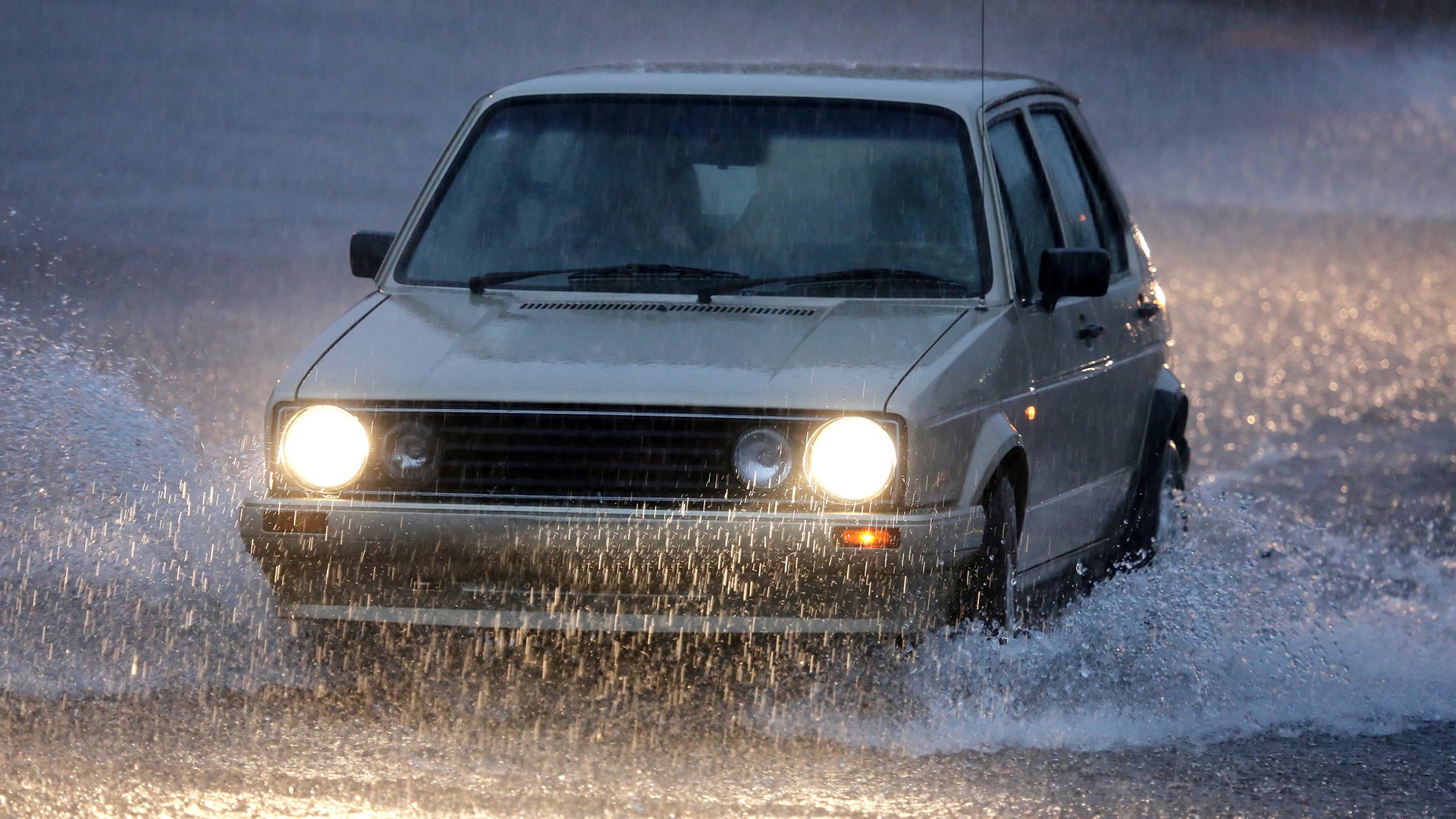Water is a powerful element.

When it’s your decision to do so, sliding across the pavement like slippery socks on a vinyl floor is an adrenaline-spiking thrill unlike any other. When it’s not your decision to do so, however, sliding across the pavement is a fear-instilling event that will leave you questioning why you’re waiting to take that bucket-list trip to the Grand Canyon.
Scary skids are significantly more likely when dealing with precipitation, but it doesn’t have to be sleet, snow, or ice. Regular plain rain can be just as dangerous if the evil stars align and your car begins to hydroplane.
Hydroplaning is covered in regulatory driving tests, but it’s not something you fully understand until you experience it. It’s impossible to completely avoid it for your entire life, so the only thing you can do is prepare yourself for when it occurs. The Drive’s editors have gathered a guide to explain what hydroplaning is, when and why it occurs, and how to handle yourself when lightning does strike. Get your notebook and learn something new below.
The Drive and its partners may earn a commission if you purchase a product through one of our links. Read more.
What Is Hydroplaning?
Hydroplaning, also referred to as aquaplaning, is when water, sometimes mixed with other contaminants, gets underneath an automobile’s tires’ contact patches and separates the tires and vehicle from the road surface. The car is then technically riding on slippery wetness rather than the grippy road because the tires cannot displace the water fast enough.
When Does Hydroplaning Happen?
Hydroplaning occurs when the amount of water on the road overwhelms the tires’ abilities to remove water from underneath the tire through the tire tread grooves.
This doesn’t necessarily mean it only happens when there’s a massive amount of precipitation raining down from the sky. Depending on how bald your tires are or how underinflated they are, it could even happen on a slippery road surface during a light rain.
Hydroplaning is also more likely to occur at higher speeds.
Where Does Hydroplaning Happen?
Technically, hydroplaning can occur anywhere there is smooth pavement or a surface that can trap water underneath the tires. This is especially true on roads with standing water like runoff or puddles. Because of the speed, it might be more likely to experience hydroplaning on a highway.
How To Protect Against Hydroplaning
There are precautions you can take that will help prevent hydroplaning.
- Make sure your tires are appropriate for the season and conditions. Certain designs have extra sipes to clear water.
- Make sure the tire is properly inflated.
- Make sure the tire has enough tread.
- Follow a strict tire rotation schedule.
- Avoid sudden movements like quick turns or hard acceleration or braking.
- Limit your speeds during rain.
- Don’t use cruise control in slippery conditions.
- Avoid puddles.
- If a road is crowned, the water will puddle easier on the outside of the road, so stick inside.
How To React When You’re Hydroplaning
*French Montana voice* Don’t panic.
- Resist your immediate urge to overreact.
- Let off the gas.
- Firmly hold the steering wheel.
- If you’re sliding straight ahead, keep the wheel straight. If you’re sliding toward the edge of a turn, turn the wheel slightly in the direction the car is moving. Just be aware that the direction of your tires will matter when you regain traction, so you don’t want them all twisted up.
- Ride it out until you feel the car regain traction.
- Pull over, take a deep breath and calm down before you get back on the road.
Video
Learning more about hydroplaning now is the best line of defense. Knowing how to react and, more importantly, what not to do, just might save you from an accident. That’s why we’ve attached the video below to help aid our conversation.





